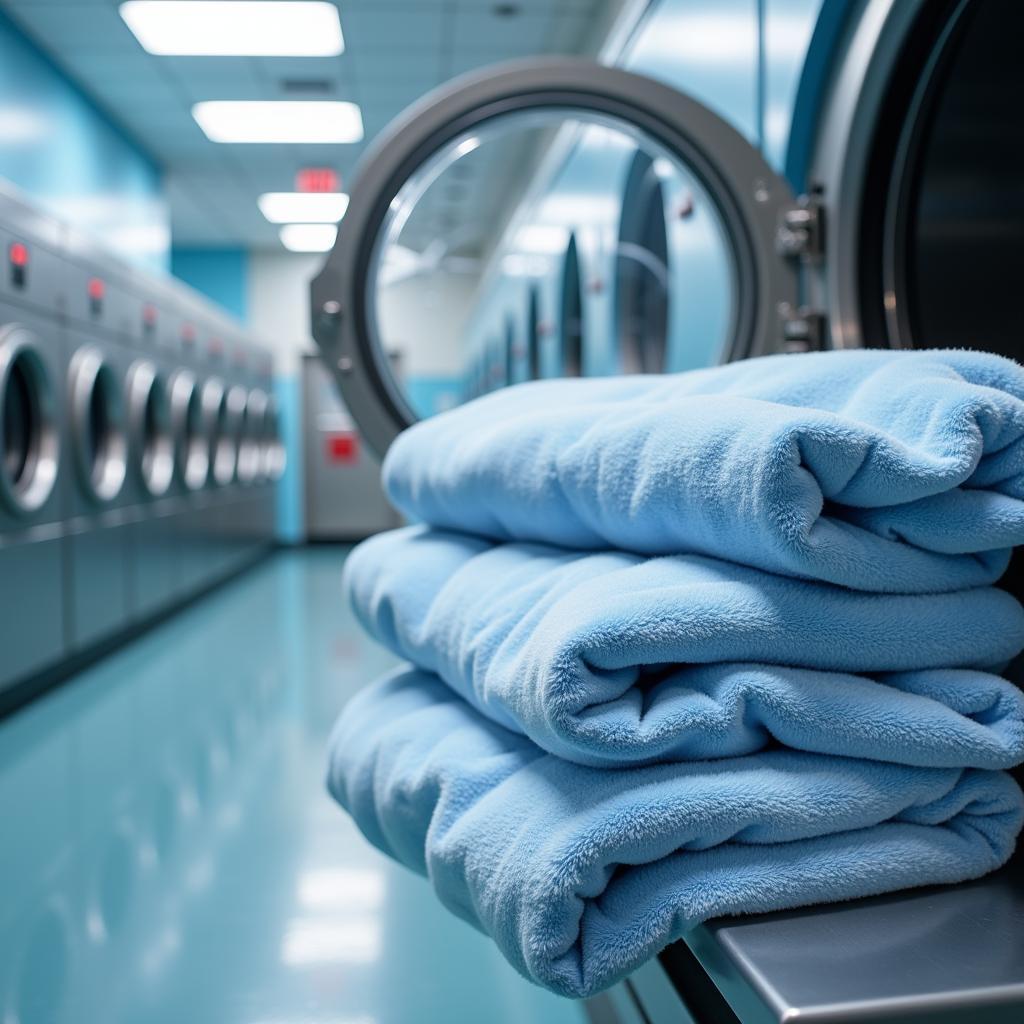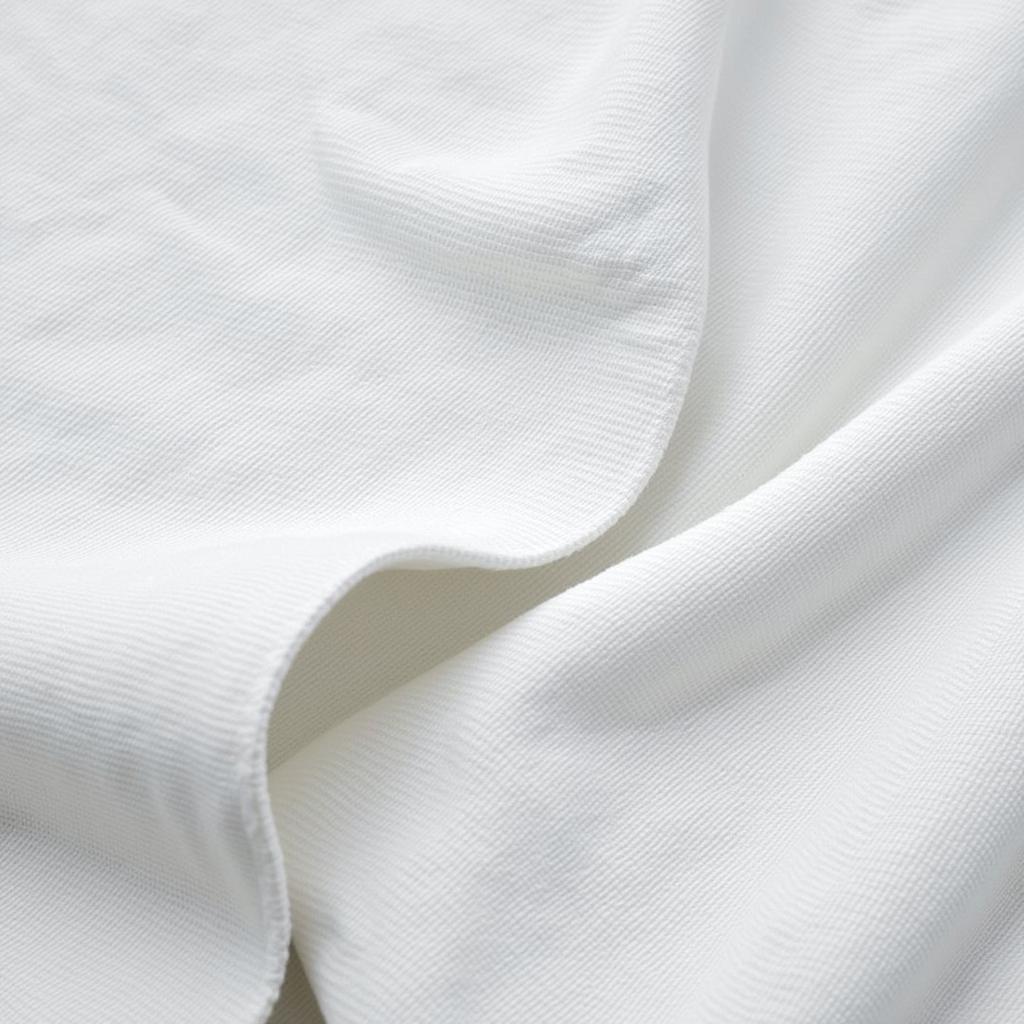Hospital blankets are a ubiquitous part of the patient experience, offering warmth and comfort during a stay. But have you ever stopped to wonder what these essential items are actually made of? Understanding the composition of hospital blankets is key to appreciating their function, durability, and role in infection control. Let’s delve into the materials, manufacturing process, and considerations behind these everyday hospital companions.
Choosing the right supplier is essential for maintaining high hygiene standards and patient comfort. For a reliable source of quality hospital linen, check out some hospital linen suppliers.
Hospital blankets are typically made from a blend of natural and synthetic fibers, chosen for their specific properties. Common materials include cotton, polyester, and wool blends. These materials are selected for their ability to withstand frequent washing at high temperatures, which is crucial for maintaining a sterile environment. The specific blend of fibers will vary depending on the intended use and the hospital’s requirements. For instance, thermal blankets might incorporate a higher percentage of wool for added warmth, while lightweight blankets for warmer climates might be predominantly cotton.
Decoding the Materials: Cotton, Polyester, and More
Cotton: The Natural Choice
Cotton is a popular choice for hospital blankets due to its softness, breathability, and absorbency. It’s a natural fiber that is gentle on the skin and less likely to cause irritation. However, 100% cotton blankets can be prone to wrinkling and shrinking, which is why they are often blended with synthetic fibers.
Polyester: The Durable Workhorse
Polyester is a synthetic fiber known for its strength, durability, and wrinkle resistance. It’s also resistant to shrinking and stretching, making it ideal for repeated washing and drying. While polyester isn’t as breathable as cotton, it can be blended with cotton to create a fabric that combines the best of both worlds.
Wool Blends: Warmth and Comfort
Wool is a natural fiber that provides excellent insulation and warmth. It’s also naturally antimicrobial, which can be beneficial in a hospital setting. However, wool can be itchy for some people and requires more delicate care than cotton or polyester. Therefore, it’s often blended with other fibers to mitigate these issues.
Why Material Matters in Hospital Blankets
The choice of material for hospital blankets isn’t arbitrary. It’s carefully considered based on factors such as infection control, patient comfort, durability, and cost-effectiveness. Blankets need to withstand rigorous cleaning processes, provide warmth and comfort to patients, and remain in good condition for extended use.
Infection Control: A Top Priority
Hospitals prioritize infection control, and the materials used in blankets play a vital role in this. Blankets are frequently laundered at high temperatures and with strong disinfectants to eliminate bacteria and viruses. Materials like polyester and cotton blends can withstand this rigorous cleaning process without degrading.
Patient Comfort: A Key Consideration
While hygiene is paramount, patient comfort is also a crucial factor. Blankets should be soft, breathable, and non-irritating to the skin. This is why cotton is often a preferred component in hospital blanket blends.
Durability and Cost-Effectiveness
Hospital blankets need to be durable and withstand frequent use and washing. Polyester’s strength and resistance to wear and tear make it a cost-effective choice for hospitals.
If you’re looking for thoughtful gifts for people in hospital, consider items that enhance their comfort and well-being.
 Hospital Blanket Washing and Sterilization Process
Hospital Blanket Washing and Sterilization Process
Manufacturing Process of Hospital Blankets
The process of creating a hospital blanket involves several steps, from fiber selection to weaving and finishing. The fibers are blended, carded, and spun into yarn, which is then woven into fabric. The fabric is then treated with finishes that enhance its properties, such as wrinkle resistance and flame retardancy.
“Choosing the right blanket material is crucial for balancing patient comfort and infection control,” says Dr. Emily Carter, Infectious Disease Specialist at San Jose Hospital. “Materials that can withstand high-temperature washing are essential for maintaining a sterile environment.”
Common Questions About Hospital Blankets
What is the lifespan of a hospital blanket? The lifespan depends on the quality of the material and the frequency of use and washing.
Are hospital blankets hypoallergenic? Not all hospital blankets are hypoallergenic, but some are made with hypoallergenic materials.
Can I take a hospital blanket home? No, hospital blankets are hospital property and should not be taken home.
Conclusion: Understanding the Fabric of Care
Understanding what hospital blankets are made of provides insight into the careful considerations behind their design and function. From infection control to patient comfort, the materials and manufacturing process are chosen to ensure the highest standards of hygiene and well-being. So, the next time you encounter a hospital blanket, you’ll have a deeper appreciation for the science and care woven into its fabric. Knowing what goes into these essential items helps us understand the importance of maintaining a clean and comfortable environment for patients. What Are Hospital Blankets Made Of? They are made of carefully chosen materials, designed with both patient comfort and hygiene in mind.
Thinking about what to give someone in the hospital? Practical gifts like comfortable pillows or entertainment items can make a big difference.
 Close-up of a Hospital Blanket Texture
Close-up of a Hospital Blanket Texture
FAQ:
-
What are the most common materials used in hospital blankets?
Cotton and polyester blends are the most common. -
Why are hospital blankets often white?
White allows for easy detection of stains and ensures proper bleaching for disinfection. -
How often are hospital blankets washed?
Hospital blankets are typically washed after each patient use. -
Are hospital blankets flame-retardant?
Many hospital blankets are treated with flame-retardant finishes for safety. -
Can I wash a hospital blanket at home?
It’s best to leave hospital blanket laundering to the professionals due to the specialized cleaning processes involved. -
How can I find out what a specific hospital blanket is made of?
Check the label or contact the hospital’s linen services department. -
Why are some hospital blankets heavier than others?
Weight varies depending on the intended use and the blend of materials. Thermal blankets, for example, are often heavier.
You can find more information about pet care at Oregon City Animal Hospital. Similarly, West Coast Animal Hospital Linda Vista Road San Diego CA is another resource for animal care.
For any assistance, please contact us: Phone: 02437655121, Email: [email protected] Or visit us at: 298 Cau Dien Street, Minh Khai Ward, Bac Tu Liem District, Hanoi, Vietnam. We have a 24/7 customer service team.